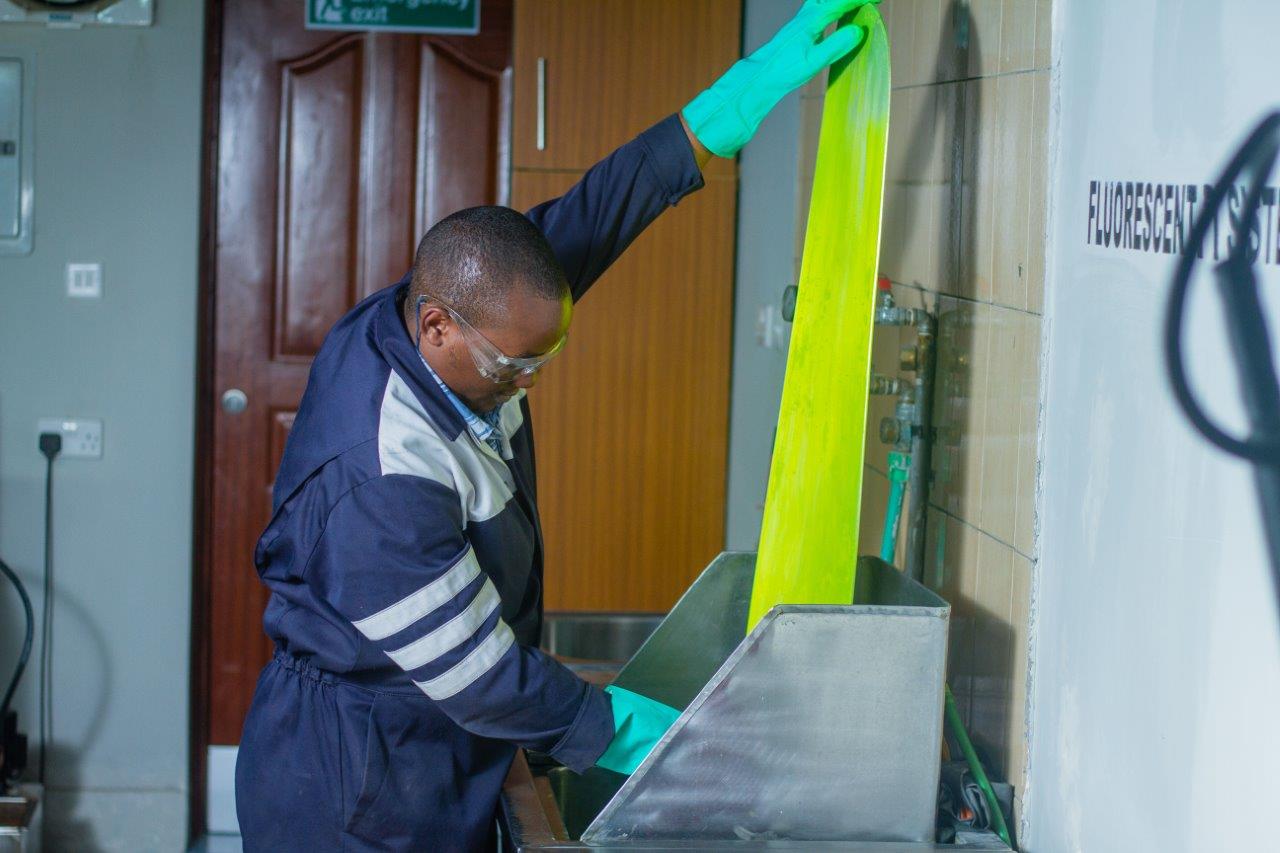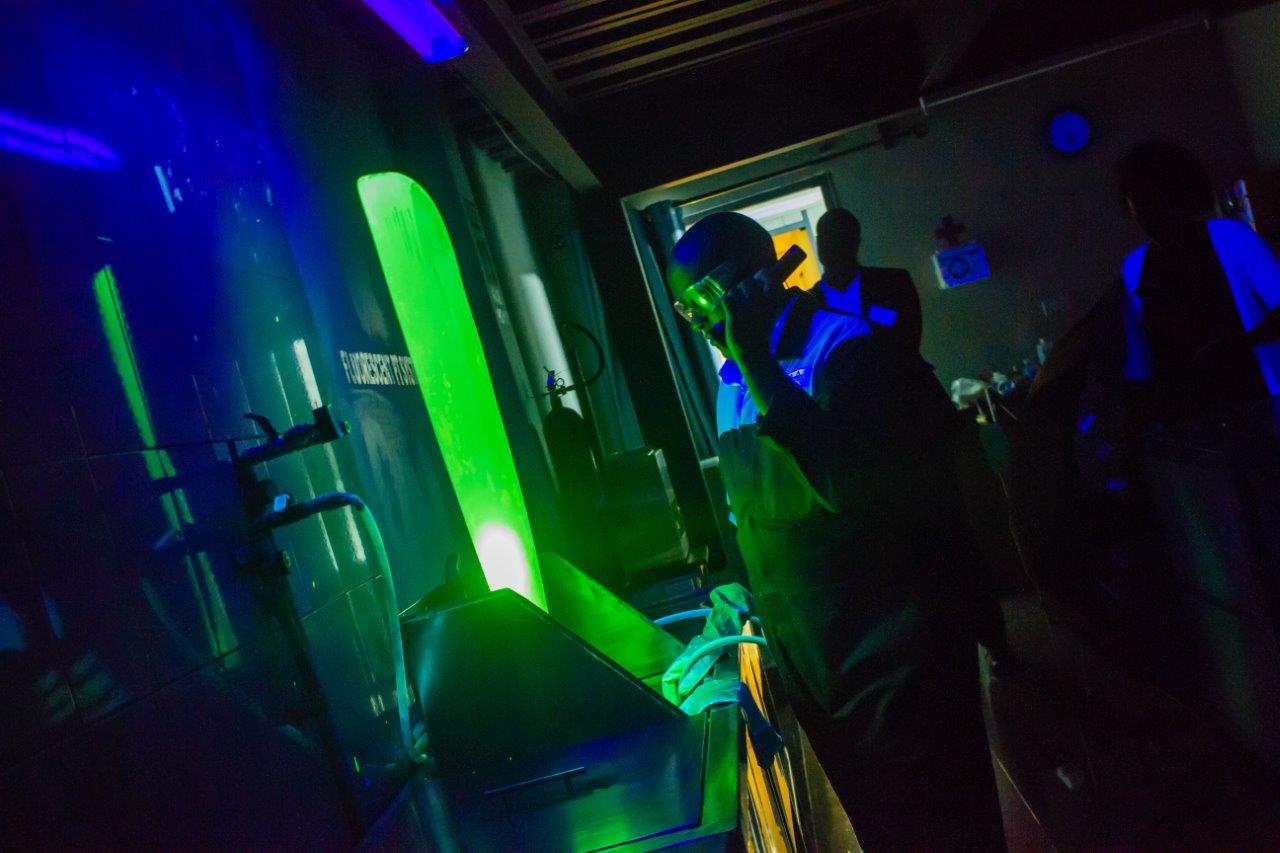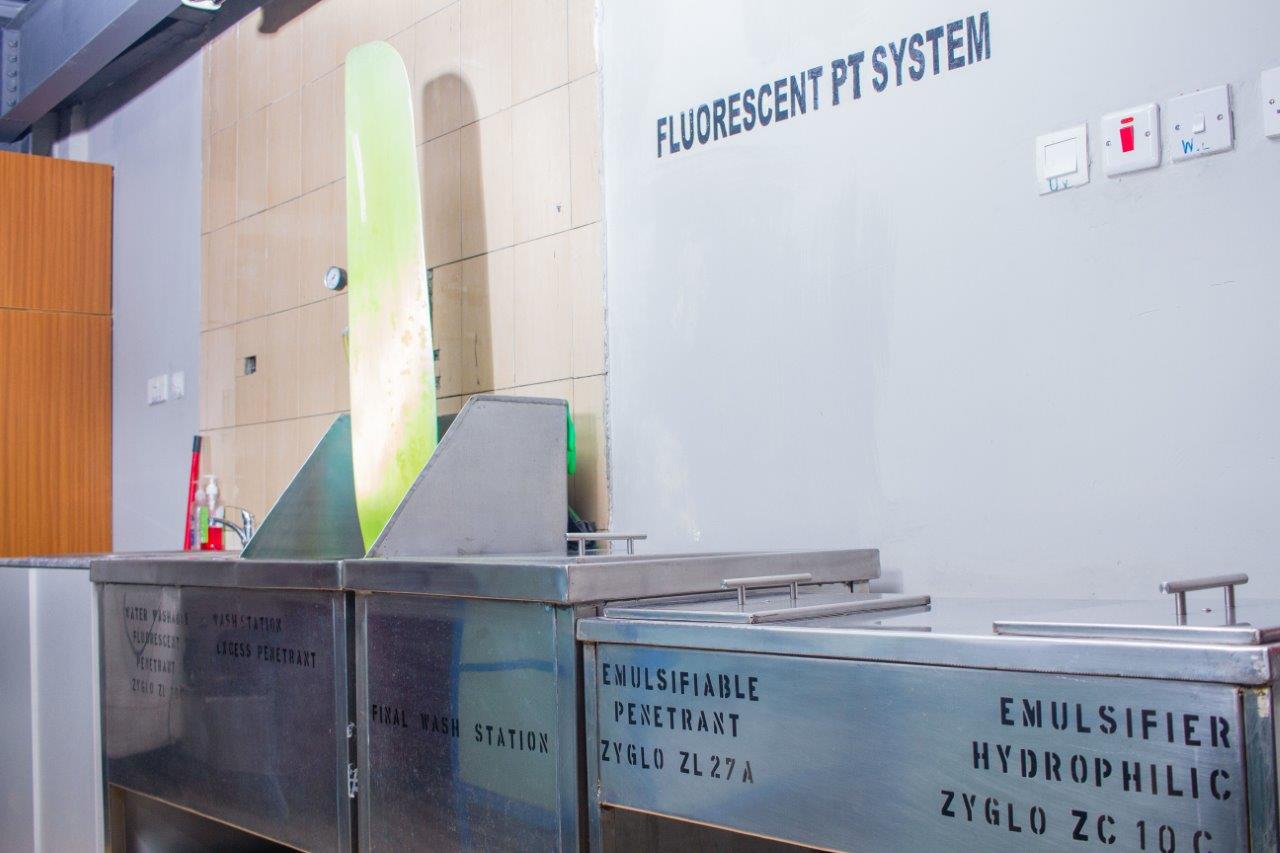Fluorescent Penetrant Testing
Liquid penetrant inspection (LPI), also known as dye penetrant inspection (DPI) or penetrant testing (PT), is a non-destructive test method which does not harm the samples or parts being inspected. The test is very effective in detecting porosity, cracks, fractures, laps, seams and other flaws that are open to the surface of the test piece that may be caused by fatigue, impact, quenching, machining, grinding, forging, bursts or shrinkage.
The basic principle of liquid penetrant testing is that when the liquid penetrant is applied to the test surface, it is drawn into the surface-breaking crack by capillary action.
After removing the excess surface penetrant and applying a developer (typically a dry powder) the developer draws penetrant from the crack and produces a surface indication relative to the size of the crack.
The main advantage of this method is that it can be applied to all non-porous materials. The main disadvantage is that the surface has to be free of surface coating and free from all kinds of contaminants.
Fluorescent Penetrant Testing in Progress
Propeller blades inspection in process using water washable penetrant in a darkroom. Propeller blades are highly stressed during flight as a result of aerodynamic loads hence they are periodically inspected for cracks.
The following four fluorescent penetrants (type one) are available
- Water washable for method A
- Solvent removable for method C
- Post Emulsifiable hydrophilic for method D
- Special solvent removable – Ultra high sensitivity level 4
ABOUT US
We are an NDT company approved by the Kenya Civil Aviation Authority www.kcaa.or.ke (KCAA) and Tanzania Civil Aviation Authority www.tcaa.go.tz (TCAA) as an AMO to offer specialized services of non-destructive testing in the aviation industry.



